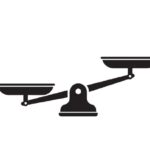Baseball bats are essential equipment for any baseball player, and they come in various types designed for different skill levels, player preferences, and league regulations. This article will discuss the materials, weights, and lengths of baseball bats and how these factors can influence a player’s performance on the field.
Materials
There are three primary materials used in the manufacturing of baseball bats:
- Wood: Wooden bats are the traditional choice and are still used in professional leagues like MLB. Common wood types include ash, maple, and birch. Each wood type has its own unique characteristics, such as {flexibility, durability, and weight distribution}(https://www.baseballmonkey.com/learn/baseball-bat-wood-types/).
- Aluminum: Also known as metal or alloy bats, aluminum bats are popular in youth and amateur leagues due to their lighter weight and increased durability. They often have a larger “sweet spot” and allow for higher ball velocity off the bat.
- Composite: These bats are made from a mixture of carbon fibers, fiberglass, and resin. Composite bats are known for their excellent performance and reduced vibration but are typically more expensive than aluminum bats.
Weights and Lengths
Baseball bats come in various lengths and weights, which are typically measured using a “drop” rating. The drop is the difference between the length (in inches) and the weight (in ounces). A higher drop indicates a lighter bat, while a lower drop signifies a heavier bat. For example, a bat with a length of 33 inches and a weight of 30 ounces would have a drop of -3.
Factors to consider when choosing the right bat weight and length include:
- Age and skill level: Younger players typically need lighter bats to develop proper swing mechanics, while more advanced players can benefit from heavier bats for increased power.
- Height and weight: Taller and heavier players may need longer bats to maintain proper balance and reach.
- League regulations: Some leagues, particularly at the high school and college levels, have specific requirements for bat weight and length.
In Conclusion
When selecting a baseball bat, understanding the different materials, weights, and lengths available is essential for optimizing performance and comfort. The right combination of these factors will depend on the individual player’s age, skill level, physical attributes, and league requirements. By carefully considering these aspects, players can find a bat that suits their needs and helps them succeed on the field.















